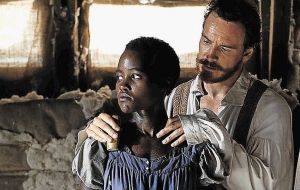MORE WRITING TIPS AND CONSIDERATIONS WHEN
INCLUDING RAPE IN YOUR FICTION
TRIGGER WARNING
AMBER LOVE 06-JAN-2015 This topic is still eating at me and I’ve come across a few more #WritingTips about character development in regards to having your characters raped/violated/molested. Below you’ll find questions that readers will be asking about your character. Use those questions now while you’re writing so that there aren’t gaping holes in the character development when your novel is in people’s hands.
For the purposes of the discussions, I tend to use “sexual assault” or “SA” as my phrase of choice. To each their own. Also, as I stated in what will be considered Part One of this, it’s obvious that women are not the only victims of sexual assault; a small percentage of grown men deal with it but primarily the victim pool will be women, children, and our LGBT brethren.
In Part One, I pointed to a link where author JIM HINES tells writers to “ask themselves why” they are having this part of their story. The “why” matters. It matters a lot more than “how” which I think some writers delve into for gratuitous value that practically fetishizes it. The “how” is where writers explore the tangible sensations of the crime: what does the room look like; what does the abuser smell like; what does the ground under the victim feel like; is there music, sounds of the environment or sick depraved humming by the abuser? Writers love to get into the “how” but many fail at “why.”
SOCIAL RESPONSIBILITY – AKA “BUT THIS HAPPENS IN REAL LIFE!”
Once you get through the opening madness of best selling author CHUCK WENDIG’S post about GAME OF THRONES being entirely too rapey, he makes more solid points about how writers should be addressing this in their stories. This is just an excerpt, so visit his blog for the full lesson.
Hopefully you can tell that by the links I’ve been referencing, that no one is saying NEVER include sexual assault in your fiction. The key ways to be successful at it are about considering the characters and the readers. I’m more in line with Jim Hines who said, if you’re only doing this to show that the bad guys are really super duper bad, than you’re not being terribly creative about your villains. Most people enjoy writing and acting the villain roles more for a reason. The villains get to be part of the dark world we, as good law-abiding writers, don’t go to, and their back stories become the cause for their wicked ways – or intentionally left as a mystery like Batman’s Joker.
This point is one of the reasons that I hated TRUE DETECTIVE season one. The acting was so brilliant, but the story sucked. It was a creeptastic cabal of abusers and that other guy, the Yellow King, who didn’t seem to be connected to them. The surviving victims lacked depth except for one LGBT character that answered a couple of questions in a club. The other victim was a despondent catatonic girl who couldn’t speak. There were implications that the detective’s own daughter was a victim, but it was never once explored. “Oh look, she’s catatonic. Lemme ask her a question.” “RAWR!!” “Okay, let’s find someone else.” The catatonia was a valid, believable reaction, but they didn’t do much with her. These moments when the detectives were investigating and trying to figure out what happened to the girl in antlers, weren’t given much time to illustrate the consequences.
It was handled poorly; and naturally the people I saw praising the show the most were male viewers. To this day, I do not have the answer to “why” about that entire story.
YOUR CHARACTER IS NOW A VICTIM – EXPLORE REACTION
If your character that suffered the sexual assault survives it, then you have a lot at stake. They are not a corpse, a mass of tissue, nor remains to move on to a coroner for investigation. They are still alive and they need to deal with what just happened.
I’m not a psychologist nor a crisis counselor but I consider myself an advocate for survivors since I am one and I don’t shut up about the horrendous treatment of women by the media and legal systems. As an advocate, I look for information and news about these stories. Part of that has included what falls under the clinical diagnosis of PTSD. Sexual assault is merely one type of trauma that can cause a person to suffer from PTSD. This information might be helpful to you for other characters in turmoil, but again, we’re addressing SA victimization and how you are writing your characters.
The diagnostic guidelines followed in America for adults and children over the age of six include:
“Diagnostic criteria for PTSD include a history of exposure to a traumatic event that meets specific stipulations and symptoms from each of four symptom clusters: intrusion, avoidance, negative alterations in cognitions and mood, and alterations in arousal and reactivity. The sixth criterion concerns duration of symptoms; the seventh assesses functioning; and, the eighth criterion clarifies symptoms as not attributable to a substance or co-occurring medical condition.” http://www.ptsd.va.gov/professional/PTSD-overview/dsm5_criteria_ptsd.asp
In meeting the criteria for PTSD, one of the stressor “A” causes must have occurred through direct exposure, witnessing the event, indirect exposure of a close family member’s traumatic event, or repeated indirect exposure through the course of something like their job or the media/entertainment. Those possible sources of trauma would be: death, threatened death, actual or threatened serious injury, or actual or threatened sexual violence.
I highlighted that part of the definition because it’s such a common misconception about what rape culture is – your character might not have been raped but she could still be traumatized by the perceived threat of it.
Category “B” states the traumatic event must be “persistently re-experienced” and one of these criteria must be met (from the same .gov source):
-
Recurrent, involuntary, and intrusive memories. Note: Children older than six may express this symptom in repetitive play.
-
Traumatic nightmares. Note: Children may have frightening dreams without content related to the trauma(s).
-
Dissociative reactions (e.g., flashbacks) which may occur on a continuum from brief episodes to complete loss of consciousness. Note: Children may reenact the event in play.
-
Intense or prolonged distress after exposure to traumatic reminders.
-
Marked physiologic reactivity after exposure to trauma-related stimuli.
Category “C” states sufferers must go through one type of avoidance: either avoiding processing their thoughts and feelings or avoiding trauma-related external reminders (e.g., places, people, activities). Categories “B” and “C” are important for writers to consider regarding their characters because it provides a checklist for you to ask if your character is going through any of these things.
The PTSD diagnosis checklist keeps going to establish the criteria that would validate if a patient does indeed have it. Perhaps, your character won’t meet the criteria but does meet the diagnosis for Depression. That’s something for you to consider as well.
QUESTIONS IN DEVELOPING YOUR CHARACTER:
- Assuming your character survived, have you altered her behavior at all? Did you start her out in an activity like school or a club where she no longer feels like going? Is she withdrawn from these things that once gave her purpose or joy?
- What persistent cognitive changes has your character gone through? Memory problems? Distracted or having trouble concentrating? Blaming herself? Blaming everyone else? Unable to experience positive emotions?
- How would you describe her reactive state? Is she unable to sleep? Hypervigilant? Being self-destructive or self-harming? Is she aggressive towards others?
- Do these symptoms and behavior disrupt the character’s ability to socialize or continue with work?
Like in the TRUE DETECTIVE example, catatonia is a believable response since it shows a character withdrawing completely in an extreme fashion by barely even living. Is there anything going on inside that mind? In TD, I didn’t have any answer to that. The girl felt like a prop – one that when poked, growled a bit. Perhaps it was a matter of how much time the show could budget. I certainly understand those constraints. If you are working on your own novel though, you don’t have a page count maximum. I don’t recommend devoting twenty pages to only repeat “and there she sat,” but you can do something! You can explain to the reader what is going on. Can she still recognize people, aromas, sounds? Does she have any sensation to the clothing that people dress her in – is the dress too itchy? Does she feel suffocated by the hair that hasn’t been cut in five years? All those sensations writers love to devote to the sexual assault scene need to have the same care and attention given to the character afterward.

Now, let’s say your character isn’t debilitated with PTSD. Are you going to forget what just happened on those pages? Why even write it then? Why have her go through it?
- She’s functioning and back at work/school. Did she miss any days?
- Did she avoid the police because of racial prejudice?
- Did she spend an extra thirty minutes wondering if she wore the wrong thing since people say victims are asking for it when their necklines are low and hemlines are high?
- Has she reconsidered meeting a guy for drinks on Friday night because she had a few drinks when she was assaulted and doesn’t know if she can trust this new guy?
- Does she have any trustworthy person in her life that she tells?
- Does she call an anonymous hotline for help?
- When a professor/coworker accidentally brushes his hand against hers while putting a paper on the desk, does she flinch?
- Is she thinking about it but choosing to stay silent because she knows the cops won’t believe her?
- Does it alter her trajectory in a positive way that she changes jobs/majors in order to devote her life to other survivors secretly or openly?
- Will she ever tell her future spouse?
If you have a character get sexually assaulted and don’t at least answer some of these questions, you wrote a rape trope, not a plot, for no reason other than you didn’t know what else to do and you wanted to fetishize a scene of someone being overpowered.


